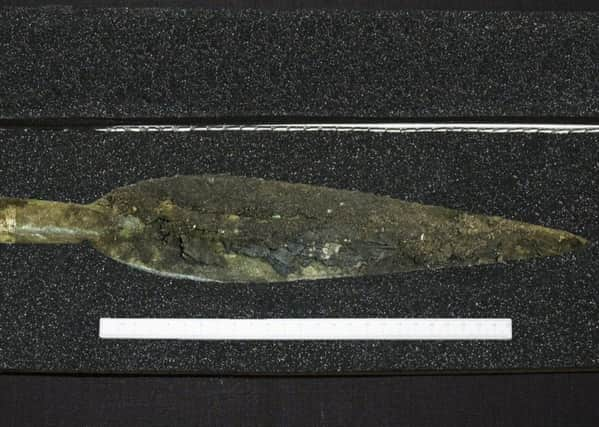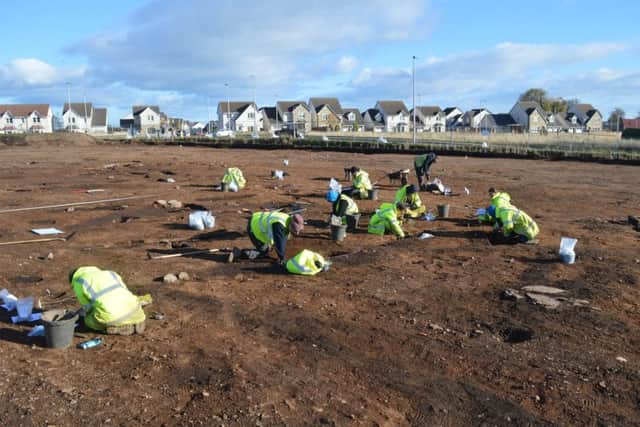3,000-year-old spearhead is 'find of a lifetime'


It was found during an excavation of land at Carnoustie in Angus which is due to be turned into two football pitches.
Alan Hunter Blair, project officer at GUARD Archaeology, said the spearhead was one of only a “handful” that had been found across Britain and Ireland and was of international significance.


Advertisement
Hide AdAdvertisement
Hide AdThe item, found as part of a wider hoard, hinted at the wealth of a warrrior-led society in the North East with excavation work continuing at the late Bronze Age settlement where it was found.
Mr Hunter Blair added: “The hoard of artefacts, which are around three thousand years old, is the find of a lifetime. It is very unusual to recover such artefacts in a modern archaeological excavation, which can reveal so much about the context of its burial.
The spearhead was found alongside a bronze sword, pin and scabbard fittings in a pit close to the settlement that was excavated by GUARD Archaeology on behalf of Angus Council.


While each individual object is significant, the presence of gold ornament on the spearhead makes this an exceptional group.
Mr Hunter Blair said earliest Celtic myths often highlighted the reflectivity and brilliance of heroic weapons.
Gold decoration was probably added to this bronze spearhead to exalt it both through the material’s rarity and its visual impact, he added.
Within Britain and Ireland, only a handful of such spearheads are known - among them a weapon hoard found in 1963 at Pyotdykes Farm to the west of Dundee.
Advertisement
Hide AdAdvertisement
Hide AdThese two weapon hoards from Angus - found less than two miles apart - hint at the wealth of the local warrior society during the centuries around 1000-800 BC.
Archaeologist also noted the extremely rare survival of organic remains at the site, including a leather and wooden scabbard described as “probably the best preserved Late Bronze Age sword scabbard ever found in Britain”.
Fur skin was also found around the spearhead with a type of textile surviving around the pin and scabbard.
Such organic remains rarely survive on dryland sites, Mr Hunter Blair said.
Further excavation work is to continue at the Bronze Age settlement with much excitement around the largest Neolothic hall so far found in Scotland.
The building dates to around 4000 BC.
Angus Council vice convener Jeanette Gaul said: “To make such a find while preparing to create sports facilities for Carnoustie came as a huge surprise to us all.”
Archaeologists were called to the site after an archaeological excavation in 2004 revealed extensive evidence of prehistoric and medieval activity.
This suggested a high potential for previously unrecorded archaeology to survive within the proposed site of the football pitches.
